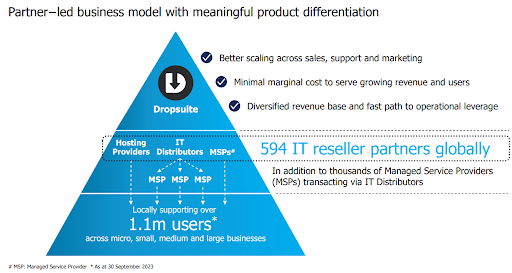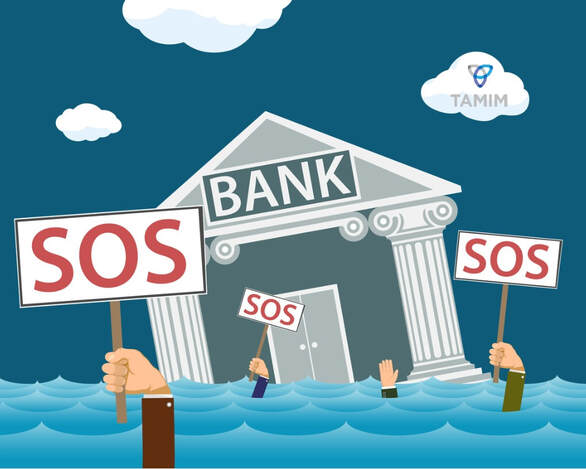From Boom to Bust: U.S. Bank Failures and Who’s to Blame10/5/2023 Who is Signature Bank? Silicon Valley Bank? First Republic Bank? Likely these are banks you’d never previously heard of prior to the past few months, and they’re now making headline news…
Unlike Australia and the United Kingdom (U.K.), which have a highly concentrated banking sector with 4 to 5 banks dominating the market, the United States (U.S.) bank sector is a lot more fragmented. In fact, the U.S. still has more than 4,100 commercial banks, which compares to 81 in Canada, 95 in Australia, 112 in Japan, 187 in China, 251 in Germany and 311 in the U.K., according to the International Monetary Fund (IMF). There’s a few reasons for this, including that a significant amount of financing in the U.S. is done by the capital markets, meaning that companies use bonds instead of bank loans to borrow money. The main reason, though, is that Americans were historically circumspect of big banks, and put in place regulations to restrict their size. Originally this included laws making it illegal to operate a bank out of more than one building (so every little town in America had its own bank), and then by only providing banks with state licences, restricting their ability to operate across state lines. This meant that at one point in the 1920s, the U.S. had nearly 30,000 banks! Over time, however, deregulation, bank failures (particularly during the Great Depression) and mergers (particularly following regulatory changes in the early 1980s when Congress allowed banks to acquire financial institutions in other states) caused a dramatic decline in the number of banks. This trend has continued, with a reduction of nearly 40% since the Global Financial Crisis (GFC).  State of the NationOn May 1, First Republic Bank (FRC, not to be confused with Republic First Bancorp or FRBK) was closed by the California regulator and entered receivership under the Federal Deposit Insurance Corporation (FDIC). It was quickly sold to JPMorganChase (JPM), which FDIC knew would deliver, with JPM having bailed out Bear Stearns and Washington Mutual during the GFC. This was the third such bank failure this year, following Signature Bank and Silicon Valley Bank in March. PacWest Bancorp also confirmed last week that it is “seeking strategic alternatives” (Wall Street speech for putting itself up for sale or a bailout), and rumours have surrounded various other regional banks, including Western Alliance Bancorporation (which it has strongly denied). Why these banks, and are there more dominoes to fall?
Too Much of a Good ThingRewind to the beginning of the pandemic in 2020. Central banks around the world, including the Federal Reserve in the U.S., began aggressively cutting interest rates and engaging in quantitative easing (essentially printing money). This monetary easing caused a flood of liquidity, and deposits at U.S. banks surged. Silicon Valley Bank, for example, saw its deposits rocket by around 300% (nearly $130 billion) since the end of 2019. For reference, bank deposits at the typical bank usually grow somewhere in the vicinity of 5% per year.

Banks have two main options for these deposits: they can use them to issue loans (to companies and individuals), or they can invest them in bonds (mostly from the government). Because the economic outlook was so dire in 2020 (the flow on impact of COVID and the reason for interest rate cuts and QE), there wasn’t much demand for loans. To increase profitability, most banks therefore invested these excess deposits in government bonds. The two main risks investing in a bond are credit and duration. Most of the bonds that U.S. banks acquired early in the pandemic were high-quality and at low risk of default, particularly those from the U.S. government. That is, they carried low credit risk. Duration, however, is where things went wrong. To squeeze out a higher level of profit, the banks “reached for yield,” buying bonds with durations as long as 5-10 years (generally speaking, bonds with longer durations pay higher interest rates, although this is not currently the case).
Punished for their SinsHaving a load of long-term bonds on their balance sheets didn’t become an issue until the Federal Reserve reversed course and began its interest rate hiking cycle. Bonds that were purchased with a yield of 1.75% to 2.00% lost half their value as long-term yields roared higher (the 10-year U.S. treasury yield is 3.76% today). These bonds count toward the banks’ regulatory capital, and the decline in their value meant that certain banks now had (on paper) not enough capital (that is, they were technically insolvent). Looking at the chart below, the blue lines represent the banks’ regulatory capital excluding unrealised losses on the bond portfolio, whereas the tan colour include these losses (note the dramatic difference for SVB or Silicon Valley Bank).
At the same time that banks’ bond portfolios were declining in value, deposits began flowing out the door. The surge from the beginning of the pandemic was reversing: companies that had benefited from the pandemic boom (particularly those in cryptocurrency and venture capital) began to burn through their cash reserves and were no longer able to conduct capital raisings to secure additional funding, and wealthy clients began transferring their money out to take advantage of higher interest rates available in savings products and U.S. treasuries. Withdrawals accelerated as customers worried about the banks’ solvency, particularly given the small percentage of deposits at each bank that were covered by FDIC insurance (FDIC provides insurance of $250,000 per account, similar to the Financial Claims Scheme in Australia). In the case of Silicon Valley Bank, the death knell was when a highly concentrated group of clients began to worry about the safety of their funds and withdrew en masse. Each of the banks that failed so far had a specialty serving cryptocurrency, venture capital, or high-net-worth clients. They also each received a vast inflow of deposits the past several years and made a bet that these deposits would stick around. Finally, the banks assumed that their bond portfolios were not at risk given the high-quality borrowers and ignored the risk that rising interest rates might have on the value of these bonds. Put another way, they paid a high price to maximise short-term profits at the risk of long term viability.
Is Bigger Better in Banking?Regional banks are copping the flak in 2023, with pundits questioning whether they are properly managed, adequately regulated, and at times why they even exist. Yet small banks are an important cog in the U.S. economy, providing the majority of commercial real estate loans (more than 80% according to economists from Goldman Sachs), as well as lending to small businesses (which account for around 44% of economic activity in the U.S., according to Forbes).
There were regional banks who managed their balance sheets admirably the past few years, such as M&T Bank Corporation (NYSE:MTB). M&T’s Chairman and CEO, Rene Jones, sounded the alarm loudly in his 2021 shareholder letter, highlighting the interest rate risk that other banks were taking in order to maximise current profits. Conversely, there were larger banks who made mistakes managing their bond portfolios, but escaped the drama of the failed regionals because of a different client base, a higher concentration of smaller, FDIC-insured accounts, and more diversified business models.
What next?While bank failures certainly cause financial (and social) turmoil, smaller regional banks play a key part in the U.S. economy and their failure is less likely to cause widespread economic damage. It may seem like a lifetime ago now, but the GFC (Ireland and the U.K. in particular) should provide a stark reminder of the dangers in having a concentrated financial system.
As to what happens now, the outcome will depend upon a number of future events that are difficult to predict, such as the level of interest rates and the economic outlook, particularly if the U.S. enters a recession. Even the Oracle of Omaha Warren Buffett, a famed bank investor (and 13% owner of Bank of America) stated: “We don’t know where shareholders of banks are going” at the Berkshire Hathaway Annual General Meeting this past weekend. What we do expect though, is greater pressure from regulators and a continuation of the trend towards consolidation in the U.S. banking sector–especially among the much smaller banks, where incredibly we have yet to see any failures.
|
From Boom to Bust: U.S. Bank Failures and Who’s to Blame
From Boom to Bust: U.S. Bank Failures and Who’s to Blame
Written by

